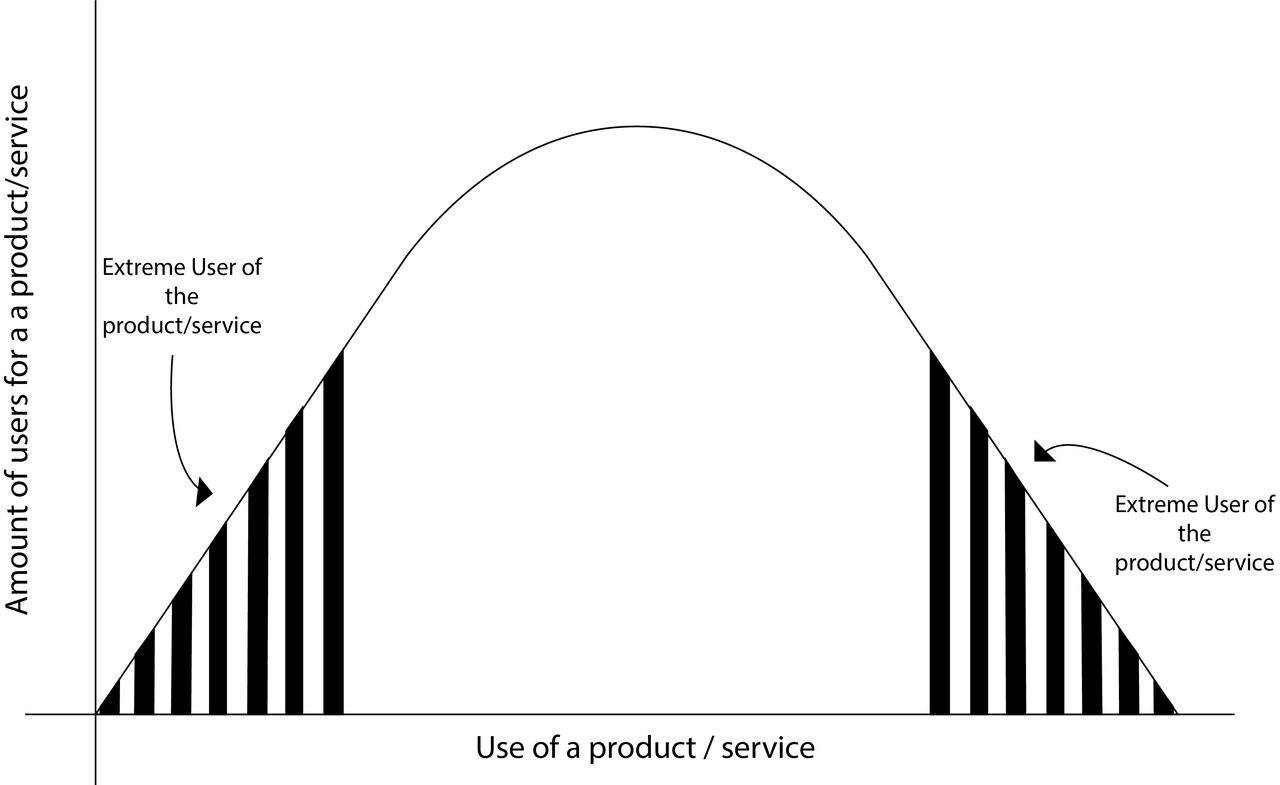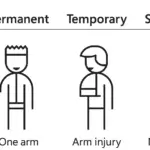Summary: ‘Extreme users’ help you cover ‘edge cases’ deliberately with an aim to de-bias your product or service vision, bring better inclusion to your product, and improve user adoption based on what ‘brink users’ can show you.
Extreme users are the individuals who push the boundaries of conventional usage or not. They may be your early or late adopters or users you don’t see because your product roadmap is based on Market Research vs User Research.
These users are key to generating innovation, broadening inclusivity, and exploring uncharted territories for your products or services. In this article, we delve into the concept of extreme users, the value of inclusive design, and the role of brink users in discovering new use cases and usage scenarios.
Understanding Extreme Users
Extreme users are those who fall at the extreme ends of the user spectrum – either they are fervent advocates who use your product or service extensively, or they represent the laggards who struggle to adopt it. Engaging with these users can provide invaluable insights guiding your UX design strategy. Extreme users tend to push the boundaries of how your product is used, revealing both its strengths and weaknesses.

Inclusivity and the Power of Diversity in Design
Inclusive Design goes beyond accommodating different abilities; it involves understanding a broad spectrum of users, including extreme users. By catering to the needs of individuals who are typically marginalized or underserved, you create a more accessible and user-friendly product for everyone. Inclusive design aligns with ethical principles and opens up avenues for innovation. How?
When designing for extreme users, you often uncover use cases that can benefit a wider audience. For instance, features designed for users with disabilities, such as voice commands for visually impaired users, can benefit all users, especially when hands-free operation is necessary.
We don’t care about average people, we look at extremes’ because that is what helps establish the parameters for an inclusive design approach, which, in turn, is ultimately guided by ‘the idea that design should be about people, not things’. -Dr. Dan Formosa, SmartDesign co-founder
The Value of Engaging Laggards
Laggards, the users who are slow to adopt new technologies or products, might seem unappealing from a marketing perspective. However, they can be a goldmine of insights for UX designers. Their hesitations and difficulties in using your product can shed light on areas that need improvement. By addressing the concerns of laggards, you can refine your product and make it more user-friendly for a broader audience.
Furthermore, embracing laggards also helps you identify barriers to entry that might be preventing potential users from engaging with your product. This information can lead to strategic changes facilitating smoother adoption and onboarding processes.
Extreme or ‘brink’ users are on the edge of adopting a new technology or trend but haven’t fully embraced it yet. They are open to experimentation and are often more willing to try unconventional or niche use cases. Engaging with brink users can be a powerful way to explore unexplored territories for your product or service.
Brink users can provide valuable feedback on potential use cases that might not have been on your radar. Their willingness to venture into new realms can lead to unexpected and innovative applications of your product. This can result in diversifying your user base and generating new revenue streams.
Bottom line
Incorporating extreme users into your UX design strategy can be a game-changer for your product or service. By understanding the needs and behaviors of those at the margins – whether they are passionate advocates, hesitant laggards, or adventurous brink users – you gain insights that can drive innovation, inclusivity, and the discovery of unexplored use cases.
Inclusion on Purpose: Inclusive Design ensures that no user is left behind, while the insights from laggards and brink users lead to continuous improvement and expansion. As you engage with extreme users, remember that the ultimate goal is to use inclusion or traveling to the edge, to enhance the user experience for everyone.









